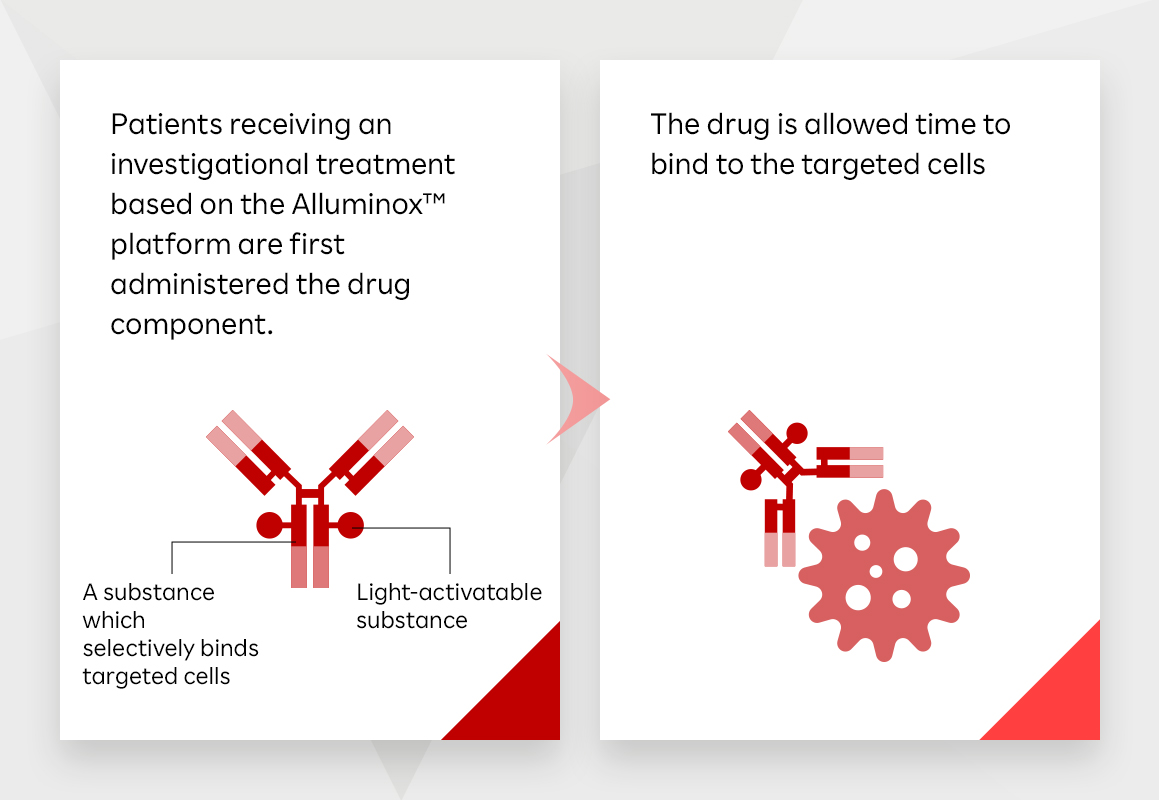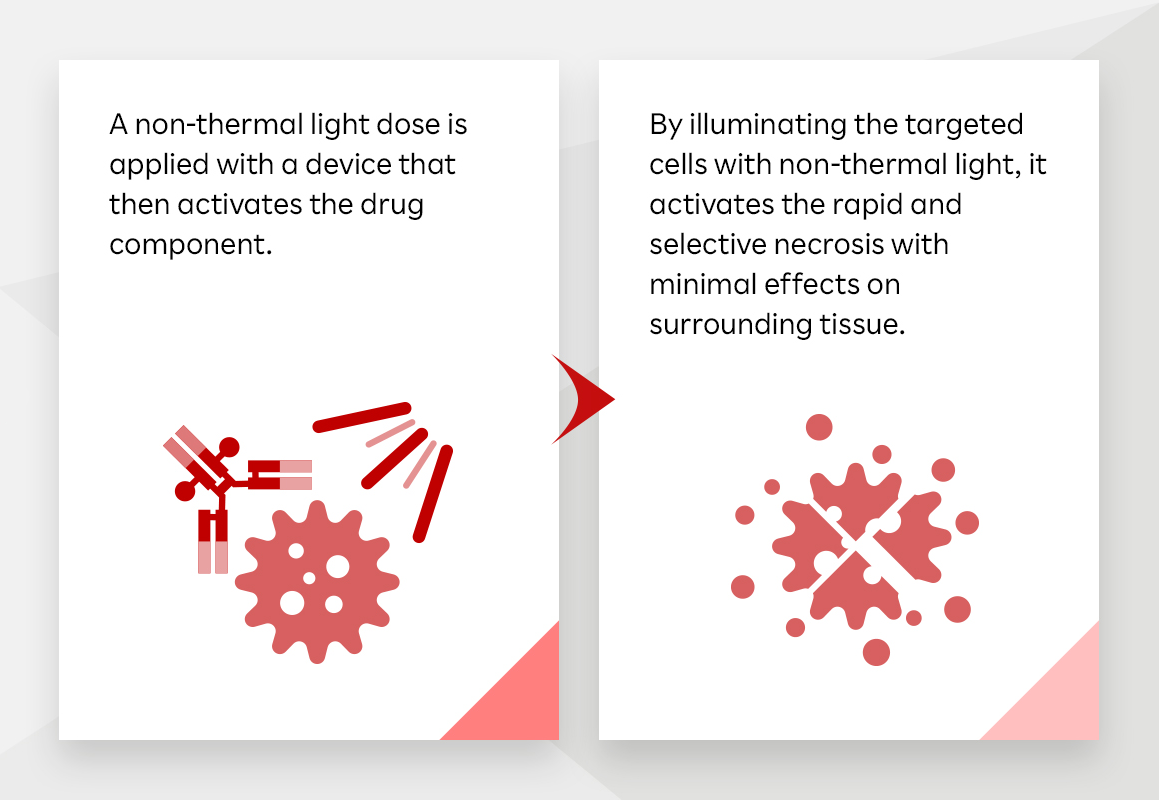Defeating Head and Neck Cancer, From Combination Therapy to Photoimmunotherapy
Head and neck cancer, the seventh largest cancer globally, typically arises from the head and neck region, with 90% of the carcinoma originating from squamous cells. Since head and neck cancer includes cancers in various subsites, like the tongue, pharyngeal, laryngeal, and nasal cavities, the symptoms and treatments can vary from different organs.
Among all the developments in cancer therapies, head and neck cancer is one of the few types with only one approved targeted therapy Cetuximab, due to its unique character. Head and neck cancer has always been one of the most difficult to treat. Since the 1970s, Cisplatin has been the only chemotherapy option for it, with the efficacy lasting only two to three months. It was not until recently that immunotherapy, the anti-PD1 treatment, finally showed a relatively satisfying outcome for head and neck cancer.
GeneOnline is very delighted to have the opportunity to interview two physicians in the head and neck cancer field, Dr. Pei-Jen Lou from National Taiwan University Hospital (NTUH) and Dr. Ichiro Tateya (楯谷 一郎) from the Department of Otolaryngology in Fujita Health University, providing a comprehensive overview on the current treatment options for head and neck cancer. Furthermore, both physicians shared their experiences conducting promising new treatment options for head and neck cancer, such as photodynamic therapy (PDT) and photoimmunotherapy, like Alluminox™, while contributing their views on future treatment trends.
Current Treatment for Head and Neck Cancer
Early detection is the best start for the outcome of further cancer treatments, and there is no exception for head and neck cancer. However, since the symptoms for this particular cancer type vary from the site of the carcinoma, detection varies in difficulty. Take oral cancer, for instance; the early-stage symptoms are lip or mouth sores persisting for two weeks or longer. As for Hypopharyngeal cancer, the early-stage symptoms are more subtle and hard to identify, causing the difficulty of early detection.
“As there are numerous subsites of head and neck cancer, the treatment strategy would be based on the site, the stage, and the invasiveness of the tumor,” said Dr. Lou.
For the initial treatment of head and neck cancer, the standard treatment option will be surgery and radiation therapy, with a controlled rate of around 70%. Dr. Lou further pointed out that oral cancer cases in the early stages would usually benefit from surgery, while advanced cases would require surgery, followed up with a combination of systemic chemotherapy and local-regional radiation therapy. The same goes for pharyngeal and laryngeal cancer cases, surgery would be ideal for early stage, and systemic combing local-regional therapy is considered a better option for advanced and metastatic patients.
Regarding local-regional surgery, Dr. Tateya mentioned that they often have to sacrifice the vocal function for laryngeal cancer patients, especially for adverse tumors, since resecting the whole laryngeal part will lose vocal abilities. “As for pharyngeal cancer, reconstructing the pharynx jejunum would be necessary to connect the mouth and esophagus. The surgery on such aggressive tumors usually takes around 7-8 hours,” said Dr. Tateya.
Furthermore, it would be much trickier regarding head and neck cancer recurrence and metastasis. “If the tumor recurrence happens in a certain part, which accounts for 70% to 80% of the head and neck recurrence cases, we would usually go for a local-regional treatment,” said Dr. Lou.
Radiation As Another Local-regional Therapy Option
Apart from local-regional surgery, local-regional radiation therapy is what doctors would go for when it comes to head and neck cancer treatment.
Radiation therapy, including proton therapy, photon therapy, and boron neutron capture therapy, has a better outcome and response as the technology evolves. The side effects, less severe compared to systematic treatment, are still harmful to the targeted tissue. Furthermore, the radiation therapy response for recurrence cases who have already used it for the initial treatment would not be as effective compared to the first-line treatment.
“As the treatment options are limited for the recurrent or aggressive head and neck cancer, there are unmet needs for those cases,” said Dr. Tateya, “therefore, a photodynamic therapy would be a good alternative choice for those patients.”
A Two-Stage Localized Treatment Could Be A Better Approach
Two-stage localized treatment, such as photodynamic therapy and the most recent photoimmunotherapy, combines a nontoxic, light-sensitive medicine, a photosensitizer, and a light source. By activating the medicine with a specific wavelength of light energy, the photosensitizer becomes toxic to the targeted cells. It may treat various cancers, including pancreas, bladder, brain, lung, and head and neck cancer.
Dr. Lou pointed out that treating with this type of two-stage localized treatment for locally recurrent head and neck cancer is highly recommended. With relatively few side effects coming with the light-sensitive medicine and little damage to surrounding tissue, the overall side effects are the least among other local-regional therapies. The only potential limitation would be the degrading of the light energy in the target tissues; therefore, the designation of allowing light energy to distribute evenly would be a major focus to eliminate the tumor efficiently.
A New Treatment To Homing on The Target Cells – Alluminox™ platform
To further improve photoimmunotherapy, Rakuten Medical Inc. has been developing a platform, the Alluminox™ platform. It is a technology combining an investigational medicine component, as well as a device component, a light source that locally illuminates the targeted cells to activate the medicine.
The medicine component, a novel antibody-dye conjugate, consists of a targeting moiety conjugated with one or more dyes leading to selective cell surface binding. After receiving the medicine, a non-thermal light dose is applied to activate the medicine, thus illuminating the targeted cells and activating the rapid and selective necrosis with minimal effects on surrounding tissues.


[Source: Rakuten Medical Website]
Dr. Tateya, after treating oral cancer and pharyngeal cancer patients with ASP-1929 (Brand Name: Akalux in Japan), an antibody-drug dye conjugate developed based on Alluminox™, was delighted to see the therapy produce stellar results by eliminating the tumor with a follow-up period of 2-4 months. Additionally, this treatment gave Dr. Lou a good impression as well, since the precision of treatment is able to provide a high concentration of medicine to the targeted cells with minimal side effects and remarkable outcomes for the patients.
Akalux is now conditionally approved for unresectable locally advanced or locally recurrent head and neck cancer only in Japan. It is still under phase 2 clinical trial in Taiwan in combination with the first-line anti-PD1 treatment, as well as a global, randomized phase 3 clinical trial, examining its efficacy and safety for recurrent head and neck cancer patients.
“The ultimate goal is to make it a standard treatment for head and neck cancer, “ said Dr. Tateya, “however, it requires completing a phase 3 trial to do so; thus, there is still a long way for Alluminox™ to go.”
The Future Trend of Head and Neck Cancer Treatment
Even though the phase 3 results of Alluminox™’s clinical trial are not available yet, Dr. Lou and Dr. Tateya are confident that it will be the next promising immunotherapy for head and neck cancer.
“The response is very good compared to other current treatment options for head and neck cancer. Thus, theoretically, I personally think it would be the future treatment trend for head and neck cancer,” said Dr. Lou.
“DNA damage might be another potential field for treatment,” Dr. Lou added, as the cause of head and neck cancer is more related to the suppression of the carcinoma gene instead of the oncogene.
With the accumulation of good responses and safety data for photoimmunotherapy, more and more physicians have considered it the trend for head and neck cancer treatment. Hopefully, head and neck cancer will be less challenging as the clinical development of photoimmunotherapy progresses.
©www.geneonline.com All rights reserved. Collaborate with us: service@geneonlineasia.com







